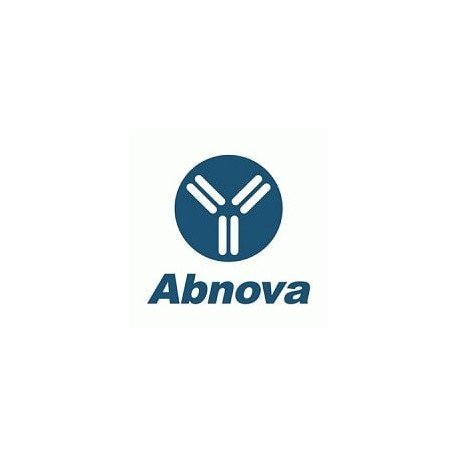Cart 0 Product Products (empty)
No products
To be determined Shipping
0,00 € Total
Prices are tax excluded
Product successfully added to your shopping cart
Quantity
Total
There are 0 items in your cart. There is 1 item in your cart.
Total products (tax excl.)
Total shipping (tax excl.) To be determined
Total (tax excl.)
Data sheet of IGF2R monoclonal antibody, clone MEM-238
| Brand | Abnova |
| Product type | Primary antibodies |
| Reactivity | Human |
| Host species | Mouse |
| Applications | WB-Ce,Flow Cyt |
More info about IGF2R monoclonal antibody, clone MEM-238
| Brand: | Abnova |
| Reference: | MAB3860 |
| Product name: | IGF2R monoclonal antibody, clone MEM-238 |
| Product description: | Mouse monoclonal antibody raised against recombinant IGF2R. |
| Clone: | MEM-238 |
| Isotype: | IgG1 |
| Gene id: | 3482 |
| Gene name: | IGF2R |
| Gene alias: | CD222|CIMPR|M6P-R|MPR1|MPRI |
| Gene description: | insulin-like growth factor 2 receptor |
| Immunogen: | Recombinant protein corresponding to human IGF2R. |
| Form: | Liquid |
| Concentration: | 1 mg/mL |
| Recommend dilutions: | The optimal working dilution should be determined by the end user. |
| Storage buffer: | In PBS, pH 7.4 (0.09% sodium azide) |
| Storage instruction: | Store at 4°C. Do not freeze. Avoid repeated freezing and thawing. |
| Note: | This product contains sodium azide: a POISONOUS AND HAZARDOUS SUBSTANCE which should be handled by trained staff only. |
| Product type: | Primary antibodies |
| Host species: | Mouse |
| Antigen species / target species: | Human |
| Specificity: | This antibody recognizes an epitope between domains 2 and 5 of CD222 (IGF2 receptor), a ubiquitously expressed 250 KDa multifunctional type I transmembrane protein.The majority of CD222 is found in the late endosomal/prelysosomal compartment, 5-10% inthe plasma membrane and the truncated (220 KDa) form of CD222 is present in human and bovine serum. |
| Reactivity: | Human |
| Application image: |  |
| Application image note: | Western Blotting analysis (non-reducing conditions) of IGF2R in whole cell lysate of Jurkat (human peripheral blood T cell leukemia cell line). Lane 1 : Immunostaining with IGF2R monoclonal antibody, clone MEM-238 (Cat # MAB3860). Lane 2 : Immunostaining with Isotype mouse IgG1 control. |
| Applications: | WB-Ce,Flow Cyt |
| Shipping condition: | Blue Ice |
| Publications: | Cell surface-expressed cation-independent mannose 6-phosphate receptor (CD222) binds enzymatically active heparanase independently of mannose 6-phosphate to promote extracellular matrix degradation.Wood RJ, Hulett MD. J Biol Chem. 2008 Feb 15;283(7):4165-76. Epub 2007 Dec 11. |


